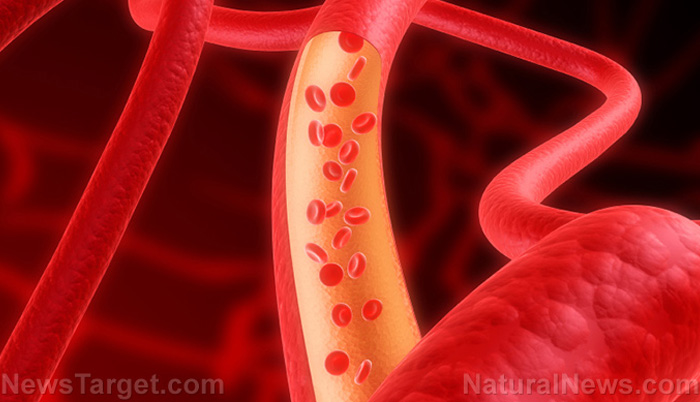![]() Home > Health
Home > Health
We All Have Tiny Hairs Inside Our Blood Vessels That Conform To The Flow Of Your Blood

![]() September 7th, 2017 | 11:17 AM |
September 7th, 2017 | 11:17 AM | ![]() 716 views
716 views
NATURALNEWS.COM
A study published on the Nature Physics website revealed that the human body is covered on the inside with soft, microscopic carpets of hair — which include the tastebuds, the microvilli in our stomachs and protein strands throughout our blood vessels — that move with the currents of fluids that they are immersed in.
In order to examine the behavior of these microscopic hairs toward fluid flow, a team of researchers at the Massachusetts Institute of Technology fabricated soft beds of hair with varying density, angle, and elasticity. The scientists then used a rheometer to measure the hairs’ impedance or resistance to fluid flow.
The research team found that stiff hairs stay upright when liquid velocity is too low during a fluid flow. On the other hand, the hairs are more susceptible to drooping if the velocity is too high.
However, the researchers noted that certain hairs with distinct angle or elasticity may exhibit an asymmetric drag response during a fluid flow. This means these angled hairs straighten when fluid is flowing against them. During this state, the hairs can slow fluid flow by serving as a temporarily raised gate.
“There’s been a lot of work done at the large scale, studying fluids like wind flowing past a field of grass or wheat, and how bending or changing the shape of an object affects impedance, or fluid flow. But there’s been very little work at small scales that can be applicable to biological hairs…What is surprising is what happened with angled hairs [is that] we saw a difference in impedance depending on if fluid was flowing with or against the grain. Basically, hairs were changing shape, and changing the flow around them,” lead author José Alvarado explained in a Phys Org article.
Potential implications in health care
The discovery of hairs that possess asymmetric drag response may help engineers to design microfluidic devices lined with angled hair that may passively direct fluid flow across a chip.
Study co-author Anette Hosoi said microfluidic equipment such as hydraulic diodes are an important component in the development of complex hydraulic systems that may get the job done.
Hosoi argued that it will be challenging to design equipment possessing functionalities that can be switched on very small scales. However, the expert noted that these angled hairs can be utilized to create a fluid diode that can switch between high and low resistance during fluid flows from one direction to another. The expert also stressed that computers and mobile phones were developed through the invention of cheap, solid-state, small-scale electronics.
“On hydraulic systems, we have not seen that kind of revolution because all the components are complex in themselves. If you can make small, cheap fluid pumps, diodes, valves, and resistors, then you should be able to unleash the same complexity we see in electronic systems, in hydraulic systems. Now the solid-state hydraulic diode’s been figured out,” Hosoi told the Science Daily website.
Source:
courtesy of NATURALNEWS
by Russel Davis
If you have any stories or news that you would like to share with the global online community, please feel free to share it with us by contacting us directly at [email protected]